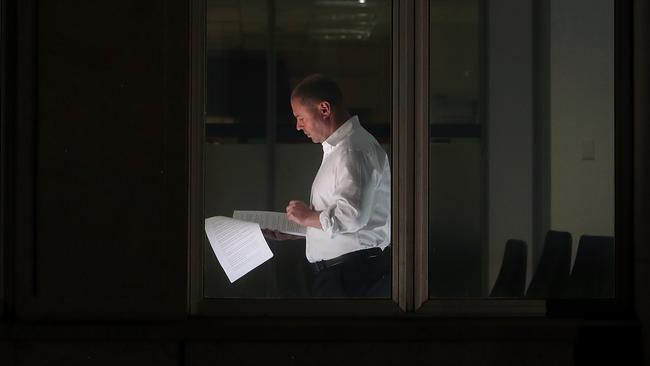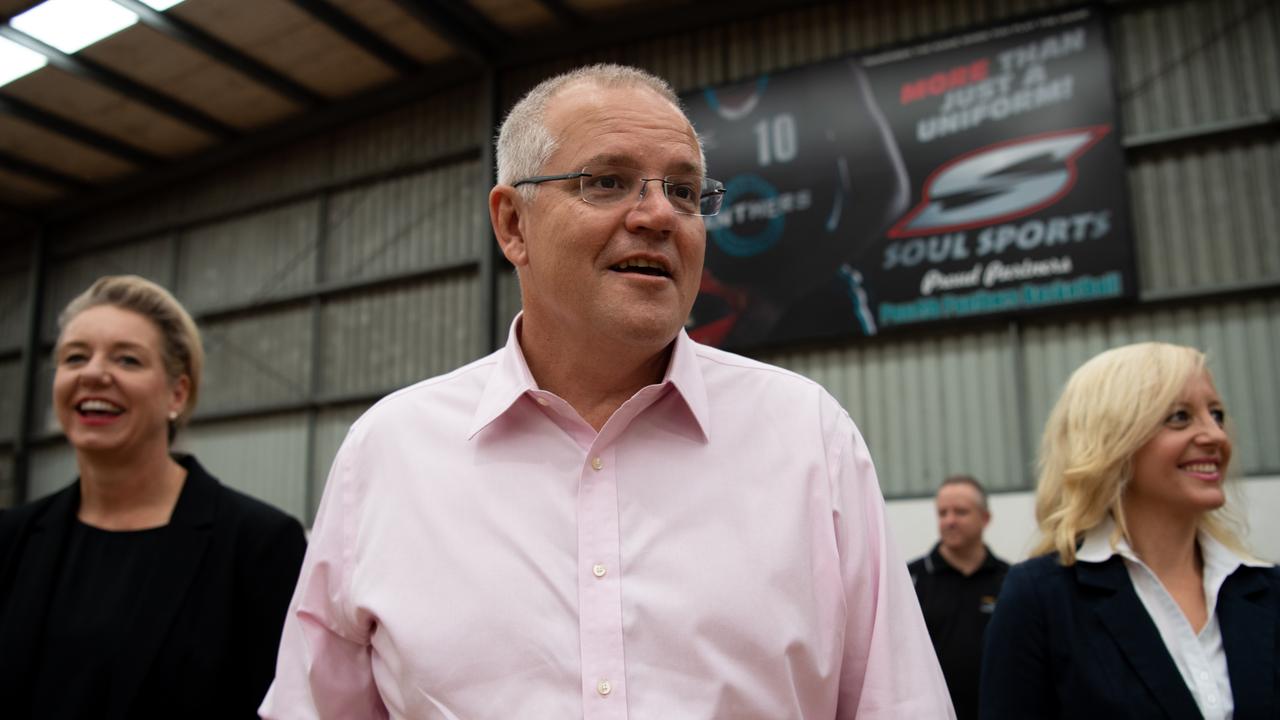Coalition’s $1bn drive to get regions moving
Scott Morrison will inject an additional $1bn into boosting freight networks across Australia in an election pitch to the regions.

Scott Morrison will inject an additional $1 billion into boosting freight networks across Australia in an election pitch aimed at shoring up the regions, including a $510 million investment in road upgrades in a 1450km corridor between Queensland and Victoria.
The Australian can reveal the Coalition will use tomorrow’s pre-election budget to expand on its $3.5bn Roads of Strategic Importance program — topping it up to $4.5bn — with the funds to be spent on improving access to regional and interstate highways over the next decade.
The budget will allocate funding for at least seven freight corridors across Queensland, Victoria, NSW and Tasmania, with the extra cash being directed towards works along roads that feed into the major arterial and interstate highways.
Deputy Prime Minister Michael McCormack said the investment was aimed at delivering faster transportation for regional businesses and stimulating local economies.
“These upgrades will support industries and communities that are critical for freight and tourism,” he told The Australian.
With an election expected to be called within days, the Nationals are under pressure in the regions after a poor performance in the NSW state election, where the party lost three seats — two to the Shooters, Fishers and Farmers Party and one to Labor.
Mr Frydenberg used a traditional televised Sunday pre-budget interview yesterday to argue the budget would focus on “responsible spending, targeted spending, in key areas that lifts the productive capacity of the economy”.
“What I can say is that this budget is focused on growing the economy so we can secure a better future for all Australians, and to repair the nation’s finances given we were left enormous debt by Labor,” he said, adding it was “not a time for cash splashes”.
The Coalition yesterday outlined a plan to provide more than 3.9 million Australians with one-off payments — $75 for singles and $125 for couples — to help cover their next energy bills.
Recipients of the payments include pensioners, veterans, single parents and the disabled.
Mr Frydenberg declined to be drawn on whether there would be more handouts or specify what additional tax cuts would be outlined in the budget.
The budget will enshrine the return to surplus following a decade of deficits in the wake of the global financial crisis.
But the Treasurer also played down the prospect of the budget already being in surplus, saying there had been economic headwinds since the mid-year economic update.
“In terms of 2018-19 we have faced … a number of spending challenges including in relation to the drought and the floods in Queensland. As well, of course, as extra GST payments to the states,” Mr Frydenberg said.
Bill Shorten and his Treasury spokesman Chris Bowen yesterday launched a pre-emptive strike against the budget.
Mr Bowen said it would be a “highly political” document and argued the forecasts and budget settings would need to be overhauled in a mini-budget later this year if Labor won office at the election next month. “If we win, we will bring down a major economic statement in the third quarter of the year, which will in effect be the first budget of a Shorten Labor government,’’ Mr Bowen said. “We need to reset the economic settings.”
Ramping up the political contest over personal income tax cuts, Mr Bowen said every Australian earning less than $125,000 a year would receive deeper tax breaks under Labor because they would be funded by reforms to negative gearing, family trusts, refundable franking credits and capital gains.
He also accused Mr Frydenberg of using the budget as a de facto election campaign launch for the Coalition. “This will be a campaign launch, not a budget, for the Liberal Party,” he said.
The new investment in regional Australia comes after the government ramped up its focus on road infrastructure last week, unveiling a $2.2bn road safety program to reduce the road toll, including an extra $1.1bn in funding for local governments under the Roads to Recovery program and $550m for the Black Spot Program targeting high-risk locations.
The Australian has confirmed the extra $1bn for the ROSI scheme will go towards targeting narrow sections of road, low-capacity bridges and deteriorating pavements, which constrain the productivity and efficiency of freight movements. The extra investment will better connect those in the agriculture and resources sectors to overseas markets.
In NSW, $140m will go towards the 500km Tenterfield to Newcastle corridor that comprises the New England Highway. The key arterial roads that feed into this corridor include the Golden, Kamilaroi, Oxley and Gwydir Highways.
Also in NSW, $20m will go to the Clarence Town Road connecting Raymond Terrace to Dungog.
The major national project is the 1450km corridor between Toowoomba and Seymour which covers the Gore, Newell, and Goulburn Valley Highways. The key arterial roads feeding this corridor include the Cunningham, Carnarvon, Kamilaroi, Mitchell and Sturt highways, and Burley Griffin and Kidman ways.
“The federal government has been working with industry, state and territory governments and other stakeholders to determine priority corridors, drawing on expert analysis from CSIRO,” Mr McCormack said.
“Corridors such as Toowoomba to Seymour and Tenterfield to Newcastle are the lifeblood of our freight industry as they support key industries across our entire country.” The corridor between Stawell in Victoria and the South Australian border — part of the Melbourne to Adelaide freight route — will receive $60m for upgrades to better link grain, timber, horticulture and livestock producers to export markets. A further $60m will go towards the Swan Hill Bridge — a priority project on the Echuca to Robinvale corridor.
Other projects include $130m for the Hobart to Sorell corridor.






To join the conversation, please log in. Don't have an account? Register
Join the conversation, you are commenting as Logout